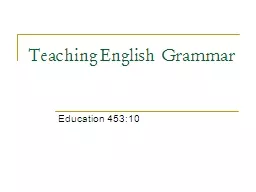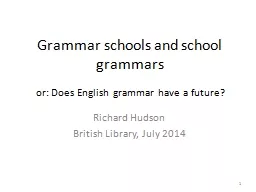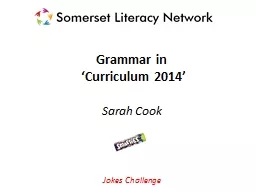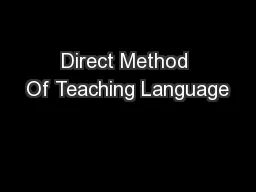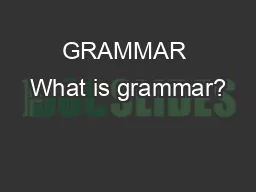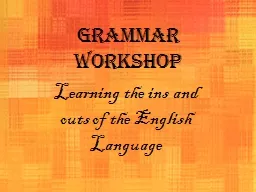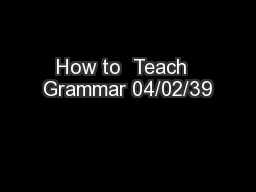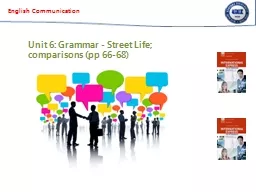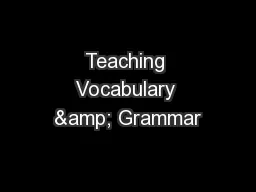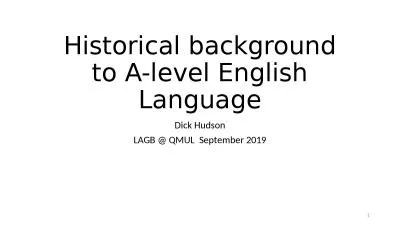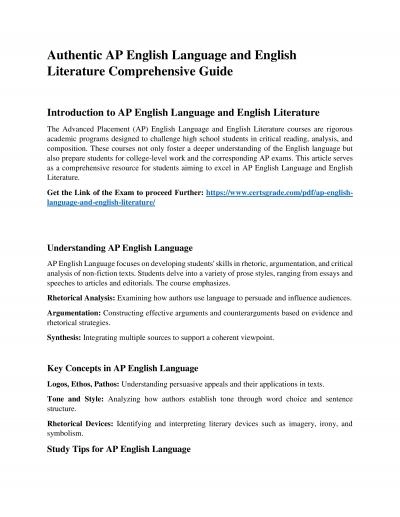PPT-Teaching English Grammar
Author : debby-jeon | Published Date : 2016-02-26
Education 45310 How much do you remember Were you ever taught the rules of grammar Rate yourself using a Likert scale from one to ten on your knowledge of English
Presentation Embed Code
Download Presentation
Download Presentation The PPT/PDF document "Teaching English Grammar" is the property of its rightful owner. Permission is granted to download and print the materials on this website for personal, non-commercial use only, and to display it on your personal computer provided you do not modify the materials and that you retain all copyright notices contained in the materials. By downloading content from our website, you accept the terms of this agreement.
Teaching English Grammar: Transcript
Download Rules Of Document
"Teaching English Grammar"The content belongs to its owner. You may download and print it for personal use, without modification, and keep all copyright notices. By downloading, you agree to these terms.
Related Documents

